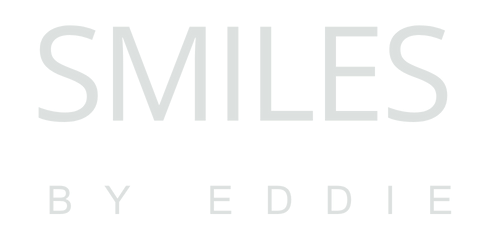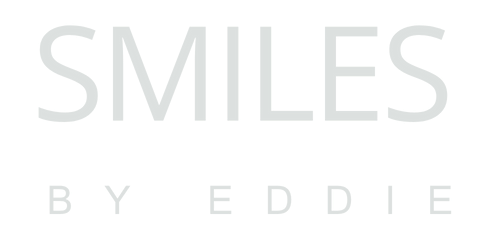A deep cleaning is a non-surgical procedure that goes beyond a routine dental cleaning. It’s specifically designed to treat early to moderate stages of gum disease. The process involves two main components:
- Scaling: This involves meticulously removing plaque and tartar (hardened plaque) from above and below the gum line, all the way down to the bottom of the gum pockets. These pockets form when bacteria and tartar irritate the gums, causing them to pull away from the teeth.
- Root Planing: After scaling, I carefully smooth the root surfaces of your teeth. This smoothing helps to remove any remaining bacteria and toxins, and it makes it more difficult for new plaque and tartar to accumulate, allowing your gum tissue to reattach more firmly to the clean root surfaces.
This thorough cleaning significantly reduces the bacterial load in your mouth, lessens gum inflammation, and helps prevent the progression of gum disease, which can otherwise lead to bone loss and tooth loss. For residents of Woodland Hills and the surrounding San Fernando Valley, our deep cleaning procedures are a cornerstone of effective periodontal care.
My commitment to your oral health goes beyond just your teeth, it extends to the foundation of your smile: your gums. If you’ve been diagnosed with gum disease (periodontitis), a deep cleaning, also known as scaling and root planning, is often the most critical first step to halt its progression, reduce inflammation, and restore your gum health. This specialized cleaning goes beneath the gum line to remove harmful bacteria and tartar. My team and I are dedicated to providing thorough, gentle, and effective deep cleaning procedures right here in Woodland Hills, helping you reclaim healthy gums and a stable smile.
Gum disease (gingivitis or periodontitis) is a common condition caused by bacteria in plaque and tartar that irritate and infect the gum tissue. If left untreated, it can lead to serious consequences, including bone loss around your teeth and eventually tooth loss. During your comprehensive examination at my Woodland Hills dental office, I will assess your gum health, measure pocket depths, and discuss if a deep cleaning is the appropriate treatment for you.
You might need a deep cleaning if you experience:
- Red, Swollen, or Tender Gums: Healthy gums are firm and pink. Inflamed gums are often red, puffy, and sensitive to the touch.
- Bleeding Gums: Gums that bleed easily when brushing, flossing, or eating. This is a common early sign of gum inflammation.
- Persistent Bad Breath (Halitosis): Caused by the bacteria accumulating in gum pockets.
- Receding Gums: Gums pulling away from the teeth, making teeth appear longer.
- Pus Between Teeth and Gums: A sign of active infection.
- Loose or Shifting Teeth: A severe symptom indicating bone loss.
- Changes in Your Bite: Your teeth feeling different when you bite down.
- Deep Pockets Around Teeth: Detected during a dental examination when measuring the space between your teeth and gums. Pocket depths greater than 3mm often indicate gum disease.
While “scaling and root planing” refers to the entire deep cleaning procedure, it’s often tailored to the specific needs of your mouth. Depending on the extent and location of your gum disease, we may perform a full-mouth deep cleaning, or focus on specific quadrants (sections) of your mouth.
For instance, if the infection is localized, we might perform “quadrant scaling and root planing” on just one or two sections. The number of appointments needed will vary based on the extent of the areas requiring treatment and your comfort level, ensuring that each section is thoroughly cleaned and has optimal time to heal.
DR. EDMOND
AHDOOT
reating gum disease effectively requires a precise, thorough, and compassionate approach. Here’s why patients in Woodland Hills, CA, and the surrounding San Fernando Valley, trust Smiles By Eddie for their deep cleaning needs:
- Periodontal Expertise: I have extensive knowledge and experience in diagnosing and treating gum disease. My meticulous technique ensures that plaque and tartar are thoroughly removed from all affected root surfaces, which is key to successful treatment.
- Patient Comfort is Paramount: I understand that deep cleaning can sound daunting. My team and I prioritize your comfort, using gentle techniques, effective local anesthesia, and offering sedation options to ensure a relaxed and stress-free experience.
- Comprehensive Assessment: I conduct a detailed examination of your gum health, utilizing advanced diagnostic tools to precisely identify areas needing treatment, ensuring a targeted and effective approach.
- Focus on Long-Term Health: My goal is not just to clean your teeth, but to help you achieve and maintain long-term gum health. I provide personalized home care instructions and emphasize the importance of consistent periodontal maintenance to prevent recurrence.
- Advanced Equipment & Techniques: Our Woodland Hills dental office is equipped with modern ultrasonic scalers and other instruments that allow for efficient and comfortable removal of deposits.
- Personalized Post-Care Plan: We work with you to develop a customized oral hygiene routine and follow-up schedule to keep your gums healthy after your deep cleaning, empowering you to take control of your oral health.
- Trusted Local Care: Located conveniently in Woodland Hills, we are your local choice for essential periodontal care, offering reliable and compassionate service close to home.

A deep cleaning is a more extensive procedure than a routine cleaning and is often completed over one or two appointments, depending on the severity of your gum disease and your comfort level. Here’s what you can expect at my Woodland Hills dental office:
- Diagnosis and Assessment: I will first conduct a thorough examination of your gums, including measuring the pocket depths around each tooth and taking necessary X-rays to assess bone levels. This helps us precisely map out the areas needing treatment.
- Anesthesia (Numbing): To ensure your comfort, a local anesthetic will be carefully administered to numb the specific areas of your mouth that will be treated. This makes the procedure virtually pain-free. We also offer various sedation options for patients who experience dental anxiety.
- Scaling: Using specialized dental instruments (which may include ultrasonic scalers that use vibrations and water, and/or hand scalers), I will meticulously remove plaque and tartar deposits from above and below your gum line. I will focus on every surface of the affected teeth, ensuring thorough removal of irritants.
- Root Planing: After scaling, I will carefully smooth the root surfaces of the teeth. This process removes bacterial toxins and provides a clean, smooth surface that encourages the gum tissue to reattach firmly to the tooth, reducing pocket depths.
- Irrigation (Optional): In some cases, an antimicrobial rinse or medication may be placed into the gum pockets to further reduce bacteria.
- Post-Procedure Instructions: After your deep cleaning, my team will provide detailed verbal and written post-operative care instructions, including how to manage discomfort, what to eat, and how to keep the area clean.
- Follow-Up & Maintenance: Depending on your individual needs, we’ll schedule a follow-up appointment (often a “perio maintenance” cleaning) usually 4-6 weeks after your deep cleaning. This allows us to monitor your healing, check pocket depths, and continue your path to stable gum health. Ongoing regular maintenance cleanings (often more frequent than standard cleanings) will be crucial for preventing the return of gum disease.
FAQ
With effective local anesthesia, the deep cleaning procedure itself should not be painful. You may feel pressure, but no sharpness. Some soreness, sensitivity, or mild throbbing can be expected after the numbness wears off, usually managed with over-the-counter pain relievers.
A regular cleaning (prophylaxis) focuses on removing plaque and tartar from above the gum line. A deep cleaning (scaling and root planing) goes much further, specifically targeting plaque and tartar below the gum line within gum pockets and smoothing the root surfaces to treat gum disease.
A deep cleaning typically takes longer than a routine cleaning and is often done in two separate appointments, focusing on one side of your mouth at a time. This allows for thorough cleaning and makes the experience more comfortable.
It’s very common for gums to be a bit sensitive, swollen, or bleed slightly after a deep cleaning, especially since they were inflamed. This usually subsides within a few days. Following post-care instructions will help.
It’s best to stick to soft foods for the first few days after a deep cleaning, especially if your gums are sensitive. Avoid extremely hot, cold, spicy, or crunchy foods.
A deep cleaning is a treatment for active gum disease, not a routine maintenance procedure. After the initial deep cleaning, you will typically transition to more frequent “periodontal maintenance” cleanings (e.g., every 3-4 months) rather than standard cleanings. This helps prevent the return of gum disease.
Deep cleaning can effectively halt the progression of gum disease, reduce pocket depths, and significantly improve gum health. While it can’t reverse bone loss that has already occurred, it can prevent further damage and help healthy gum tissue reattach.
Most dental insurance plans provide coverage for scaling and root planing, as it is a necessary medical procedure to treat gum disease. The amount of coverage varies. My team will help you understand your specific benefits and provide an estimate.
For advanced stages of gum disease where deep cleaning and consistent maintenance aren’t sufficient, I may refer you to a periodontist (a gum specialist) for more advanced treatments, such as gum surgery.
Extremely important! Your daily oral hygiene routine (diligent brushing, flossing, and possibly using an antimicrobial mouthwash) is crucial for maintaining the results of your deep cleaning and preventing the reaccumulation of bacteria and tartar.
